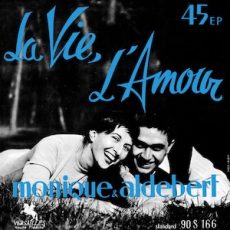
Daily Dose Of Jazz…
Louis Aldebert was born on June 8, 1931 in Ismailia, Egypt. He studied both singing and piano after his family moved to Paris, France and became efficient enough on the latter instrument to gig with tenor saxophonist Don Byas in the mid-1950s. Several years later he played with violinist Stephane Grappelli of Hot Club fame.
Having a career as a singer, he worked with the Blue Stars in the mid-’50s. From 1959-1965 he was a member of the Double Six, a kind of experiment in overcrowding via scat singing. Needless to say, this attracted the attention of Jon Hendricks who made use of Aldebert on a 1965 session.
He married singer Monica Dozo, and after feeling a bias as Byas bandmates, she changed her name to Monique Aldebert-Guerrin. She was part of the rotating Double Six recording cast when some members needed to recover from nagging earaches.
Leaving the Double Six, Byas’ group and the French jazz scene in 1967, the couple moved to America. They initially settled in Las Vegas, Nevada before heading West to Los Angeles, California. They had their own group and did freelance studio vocal work in various capacities, one highlight being a feature on a 1979 side by the Crusaders.
Vocalist, pianist and composer Louis Aldebert, who with his wife collaborated as composers of original songs as well as vocal arrangements of various jazz standards, died on October 10, 2014 in Los Angeles.
More Posts: composer,history,instrumental,jazz,music,piano,vocal
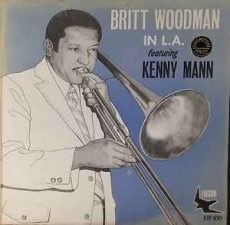
Daily Dose Of Jazz…
Britt Woodman was born on June 4, 1920 in Los Angeles, California. A childhood friend of Charles Mingus, he first worked with Phil Moore and Les Hite. After serving in World War II he played with Boyd Raeburn before joining with Lionel Hampton in 1946.
During the 1950s he worked with Duke Ellington. As a member of Ellington’s band he can be heard on twenty-five recorings such as 1957’s Such Sweet Thunder, Ella Fitzgerald Sings the Duke Ellington Song Book, and 1958’s Black, Brown, and Beige and Ellington Indigos.
1960 saw Britt departing from Ellington to work in a pit orchestra. He went on to later work with Mingus and can be heard on the album Mingus Mingus Mingus Mingus Mingus released in 1963. In the 1970s he led his own octet and recorded with pianist Toshiko Akiyoshi. In 1989, he was part of the personnel for the album Epitaph dedicated to the previously unrecorded music of Charles Mingus.
He recorded Playing For Keeps and In L.A. as a leader, and leaves a sideman recording catalogue of ninety-three albums with Toshiko Akiyoshi – Lew Tabackin Big Band, Bill Berry, Ella Fitzgerald, Lionel Hampton, Johnny Hodges, Jimmy Smith, Gene Ammons, Ray Brown, Ruth Brown, Frank Capp, Nat Pierce, Benny Carter, Rosemary Clooney, John Coltrane, Randy Crawford, Tadd Dameron, Miles Davis, Booker Ervin, John Fahey, Dizzy Gillespie, Benny Golson, Chico Hamilton, Jimmy Hamilton, Hank Jones, Oliver Nelson, Philly Joe Jones, Jon Lucien, Galt MacDermot, Teo Macero, Junior Mance, The Manhattan Transfer, Wade Marcus, Blue Mitchell, Grover Mitchell, James Moody, Maria Muldaur, Oliver Nelson, Oscar Peterson, Zoot Sims, Billy Taylor, Clark Terry, Teri Thornton, Jimmy Woode
Trombonisit Britt Woodman died in Hawthorne, California at the age of 80, having suffered severe respiratory problems on October 13, 2000.
More Posts: bandleader,history,instrumental,jazz,music,trombone
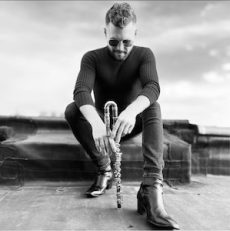
Daily Dose Of Jazz…
John Troy was born on June 3, 1989 in Buffalo, New York. He began playing the saxophone at age twelve. After showing exceptional ability in the classical realm throughout middle school, with the tutelage of William Eicher, his attention gradually turned toward the study of Jazz Saxophone. He honed his skills with lead alto saxophone for Concert and Jazz All-County Ensembles, and New York All-State Bands as well.
John played both lead alto and tenor in the Fredonia Jazz Ensemble, student big band. He can be heard on the 2009 release of the FJE’s, Still Kickin’ and his debut album All Ahead Flank. He led his own small groups, Jazz Quintessential, and an organ trio, the JT Trio both with significant success.
He has performed and/or studied with the likes of Eric Alexander, Grant Stewart, Ralph Lalama, Todd Coolman, Tim Armacost, Chris Potter, Tom Harrell, Stacy Dillard, Hal Galper, Arturo O’ Farrell, and Pete Malinverni, among others.
Tenor saxophonist John Troy continues to find his musical way through performance and recording in the hard bop genre..
More Posts: bandleader,history,instrumental,jazz,music,saxophone
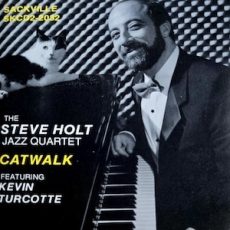
Daily Dose Of Jazz…
Steve Holt was born on May 9, 1954 in Montreal, Quebec, Canada and exhibited musical ability in early childhood, playing piano at the age of four. By the time he was a teenager he was a regular on the Montreal club scene.
He was self-taught until he entered McGill University where he was taught by pianist Armas Maiste, whose bebop playing influenced him. Becoming a student of Kenny Barron he regularly traveled to New York City for private lessons. Holt graduated from McGill in 1981 with that university’s first Bachelor of Music major in Jazz Performance, and went on to teach jazz improvisation there.
His 1983 debut album, The Lion’s Eyes, was nominated for a Juno Award. He has worked with jazz musicians Larry Coryell, Eddie Henderson, and Archie Shepp. He moved to Toronto, Canada in 1987 and worked as an equity analyst and for a while Steve continued playing clubs at night.
In the Nineties he released three albums then decided to concentrate on music full-time. Three years later, his fifth album, The Dream, was released. Moving into music production he stopped performing jazz live until 2014. Following a move to the countryside, his interest in jazz performance returned.
In 2017, he opened a health food store in Warkworth, Ontario, Canada that operates as a jazz venue once a week. After a twenty year absence from the recording field, pianist Steve Holt released Impact, his new album in 2025 under the new band, The Steve Holt Jazz Impact Quintet.
More Posts: bandleader,history,instrumental,jazz,music,piano
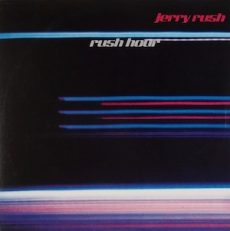
Daily Does of Jazz…
Jerry Rusch was born on May 8, 1943 in St. Paul, Minnesota and studied at the University of Minnesota from 1962 to 1964, then played in an Army Reserve band before moving to Los Angeles, California in 1966.
Becoming a fixture in the city he played with Gerald Wilson from 1967, Ray Charles, Clifford Jordan, Joe Henderson, Willie Bobo, Louie Bellson, Teddy Edwards, Frank Foster, and Thad Jones/Mel Lewis. In Europe he played with Joe Haider’s Orchestra from 1982 to 1984.
As a sideman he recorded extensively among his credits are work with Charles Kynard, Benny Powell, Henry Franklin, Eddie “Cleanhead” Vinson and Stan Kenton, as well as Gladys Knight, the Rolling Stones, Smokey Robinson, Diana Ross, the Temptations, and many others.
Trumpeter Jerry Rusch, who was also credited as Jerry Rush and performed in the hard bop and post bop genres, died of liver cancer in Las Vegas, Nevada on May 5, 2003 at the age of 59, three days shy of his 60th birthday.
More Posts: history,instrumental,jazz,music,trumpet



